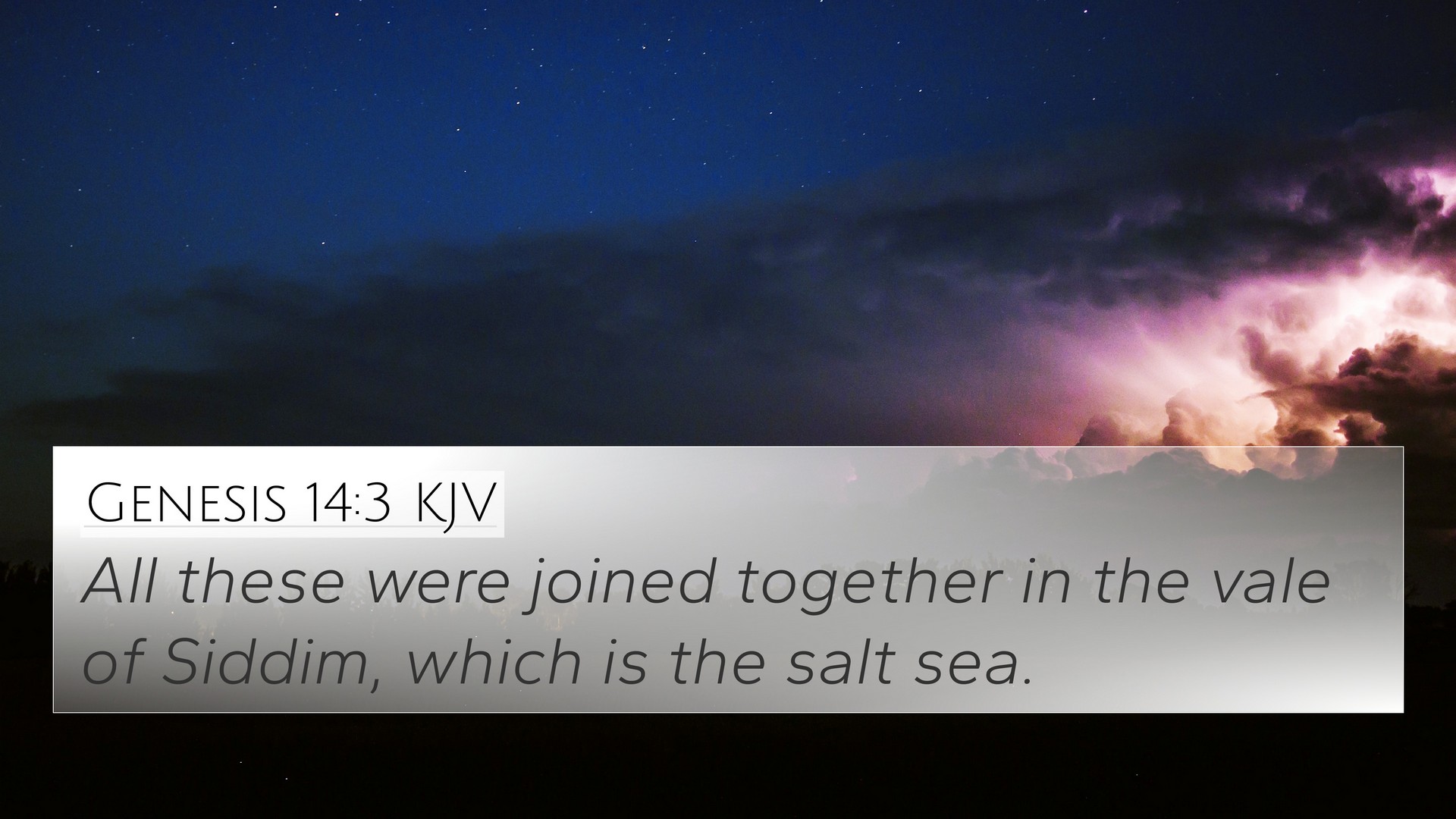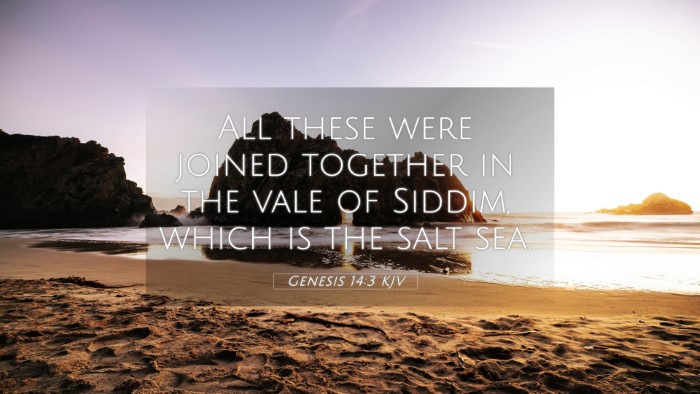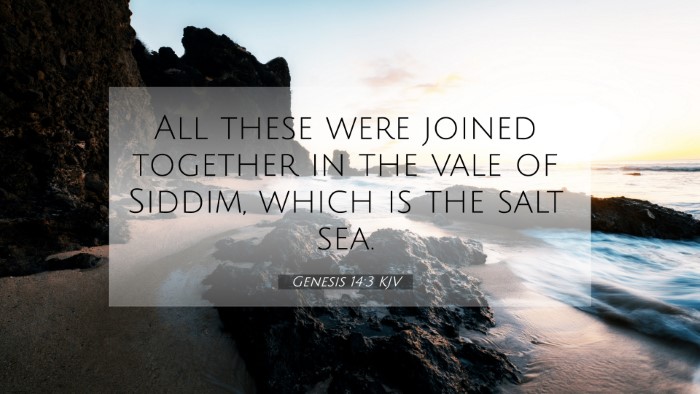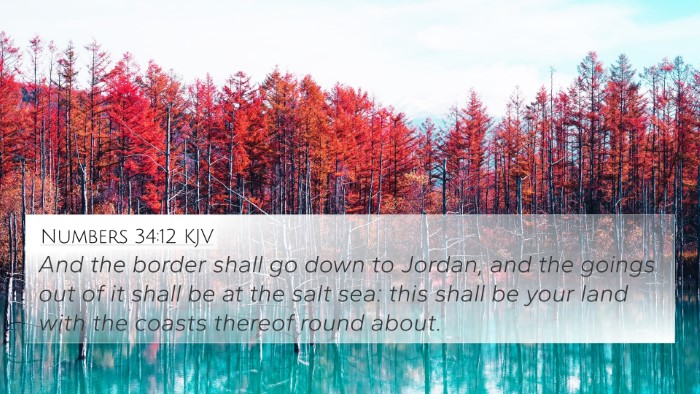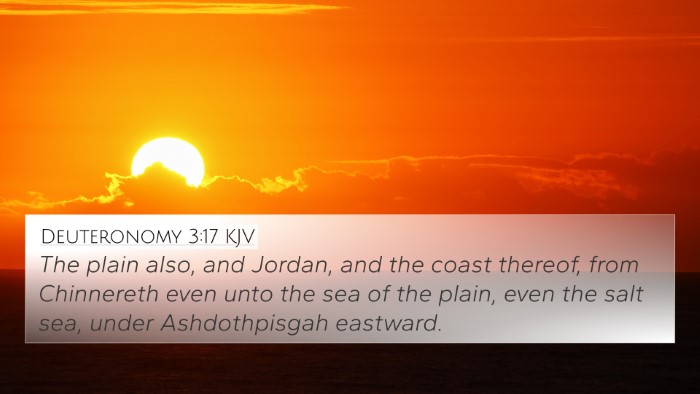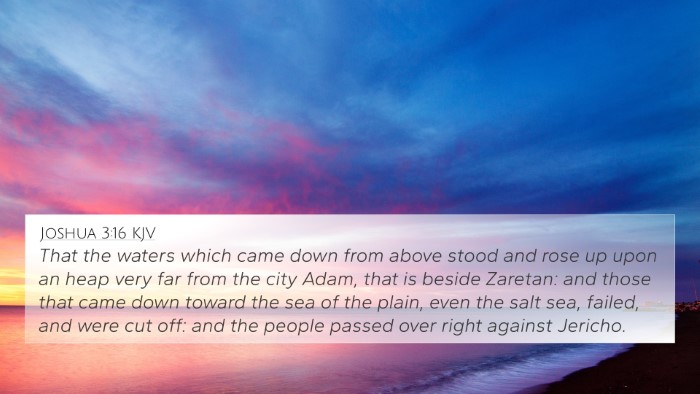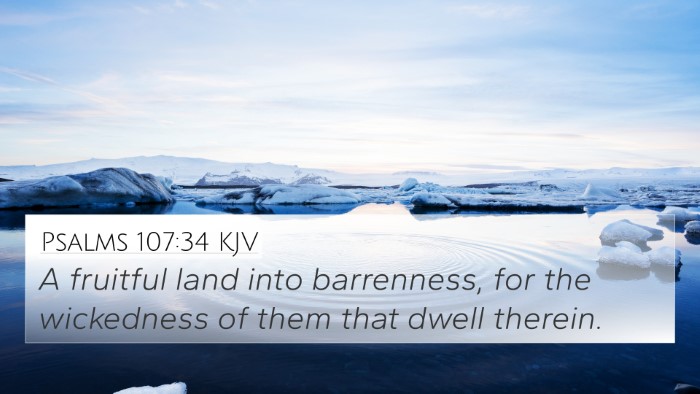Understanding Genesis 14:3
“All these joined together in the vale of Siddim, which is the salt sea.”
This verse is part of a larger narrative concerning the conflicts among various kings during the time of Abram (later called Abraham). In this context, the vale of Siddim symbolizes the backdrop of significant events that eventually lead to Abram's intervention in the conflict. Here’s a summarized analysis based on public domain commentaries:
The Setting of Genesis 14:3
Genesis 14 describes a coalition of kings that came together to battle against another coalition. The vale of Siddim, identified as the location of the salt sea (often linked with the Dead Sea), plays a pivotal role in the conflicts of the region. This coalition represents the socio-political landscape of ancient Canaan and highlights the struggle between different powers.
Matthew Henry's Commentary Insights
Matthew Henry emphasizes that the joining of these kings illustrates a form of alliance in opposition to common foes. The vale of Siddim serves as a geographic marker, highlighting the strategic relevance of the area. Henry notes that geographical locations in Scripture often hold deep theological implications, reflecting God’s sovereignty over nations.
Albert Barnes Commentary Analysis
Barnes points out that the partnership of the kings indicates a united front, which can serve as a metaphor for the cooperation of worldly powers against God’s people. He relates this to the ongoing struggle between good and evil throughout biblical history. The reference to the salt sea suggests desolation, and Barnes associates this with the eventual fate of Sodom and Gomorrah, cities of great wickedness that are prominently featured in Genesis.
Adam Clarke's Exposition
Clarke adds that the mention of specific locations reflects the historical context of the text. He notes that these kings aimed to assert their dominance over the region, and the vale of Siddim symbolizes a valley of decision or judgment. Clarke indicates that this event is not just political but also has profound spiritual ramifications, showcasing God's providence.
Connections Between Bible Verses
Genesis 14:3 can be cross-referenced with several important Scripture passages that enhance our understanding of the tumultuous relationships in the ancient world and God's overarching plan:
- Genesis 14:1-2 - The introduction of the kings who formed the coalition.
- Genesis 19:24-25 - The judgment upon Sodom and Gomorrah reflects the aftermath of these regional conflicts.
- Isaiah 37:36 - Highlights God’s power against worldly kings.
- Psalm 46:6 - Shows God’s ultimate authority over nations.
- Matthew 5:13 - “You are the salt of the earth” parallels the symbolism of salt in Genesis 14:3.
- Hebrews 7:1-2 - Discusses Melchizedek, linking his priesthood to the event described in Genesis 14.
- Romans 8:31 - Suggests that if God is for us, none can stand against us, mirroring Abram's defense of Lot.
Thematic Connections and Analysis
The themes presented in Genesis 14:3 can be tied to the broader narrative of Scripture, emphasizing the spiritual battle between godly leadership and worldly powers. The cooperative action of these kings is a reflection of the unity found in opposition to divine plans.
This verse also echoes throughout biblical history—suggesting that alliances formed in moments of desperation often lead to downfall, as seen in the subsequent judgment of Sodom and Gomorrah. The salt sea as a backdrop serves to remind us of the consequences of sin and disobedience to God.
Using Bible Cross-References
For those studying Genesis 14:3, utilize tools for Bible cross-referencing to uncover deeper meanings and interconnections. A Bible concordance can help locate related verses effectively, while cross-reference guides allow for thematic studies. Understanding how to use these resources will enhance your biblical literacy:
- Explore historical context and its implications through various passages.
- Identify connections between Old and New Testament to recognize God's consistent message.
- Study parallel themes within Scripture to understand God's dealings with humanity.
Practical Application
As you reflect on Genesis 14:3, consider how the insights gleaned from Scripture can be applied in the modern context. The narrative represents more than just historical events; it speaks to the necessity of faith and reliance upon God amidst worldly conflicts. Through comparative study and cross-referencing, one can gain clarity on the nature of divine justice versus earthly alliances.
